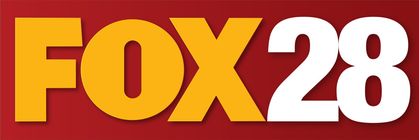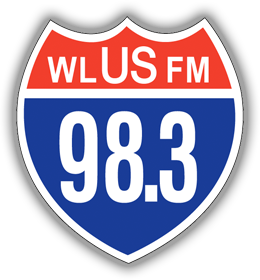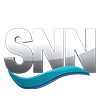Water damage from a malfunctioning sprinkler system in a commercial setting such as a manufacturing plant, distribution center, medical building, or professional office complex can have devastating consequences. SERVPRO of Palo Alto understands the challenges of providing water damage cleanup and restoration services in a setting where information technology (IT) is interwoven with the production process or services.
.png)
A fire in any commercial setting can be devastating. Damage to the facility shuts down production and the provision of services, interrupting the revenue cycle. Overhead does not suddenly cease if the business closes for days or weeks. Cleanup and restoration incur an expense even if insurance pays for the damage. Equipment must be repaired or replaced. Preventing fire damage is a top priority. The typical means of minimizing fire damage has been installing a traditional sprinkler system, but this strategy comes with an inherent hazard: unintended water damage.
A fire not only damages the physical plant and means of production, but fire damage can also wreck the information technology (IT) systems essential for business operations. Traditional sprinkler systems can limit the fire spread in a factory, but water from sprinklers can also ruin expensive hardware in an IT-based environment.
Fire-mitigation engineers explain the challenges of sprinkler systems: “As businesses move to a more technology-based environment, traditional sprinkler systems prove problematic to protecting IT equipment. Luckily, more effective options exist. Today, the installation of information technology (IT) protection is an essential part of construction design, including the IT disaster recovery plan. The recovery strategies are based on buildings, hardware, and data protection standards. The procedures are incorporated into the building design, construction planning, and impact analysis. Without the proper systems, the impact of damage or loss to IT equipment can be very significant. The damage can be prevented and controlled.”
Tips to Protect IT Equipment from Fire and Water Damage
A well-designed and properly installed sprinkler system protects the building from severe fire damage. The sprinkler system can also protect IT equipment from fire and water damage. The tips listed below provide the information needed to understand the available options so decision-makers can select the best sprinkler system for their facility.
Tip #1. Become familiar with the various types of sprinkler systems.
System specifications are determined by three factors: geographical location, local building codes, and the desired level of protection. Each facility has its own unique needs, which will dictate the application of time delays, installation costs, maintenance requirements, and expenses.
- Deluge system
Deluge systems discharge a spray of water over an expansive area. Multiple sensors alert personnel to impending sprinkler activation. This delay allows the situation to be assessed and the system to be interrupted in the event of a false alarm.
- Dry pipe systems
This option is preferable where frozen pipes present a hazard. Water can only flow through the lines when a fire opens a valve. The time it takes for water to move through the pipes gives employees time to protect IT equipment.
- Pre-action systems
A derivation of the dry pipe design, a pre-action system works well in situations where moisture and water can prove detrimental to the contents under the sprinkler system. Multiple sensor functionality avoids unintended activation of the fire detection system.
- Wet pipe systems
Wet pipe systems consist of a heat-sensitive sprinkler head fitted with a check valve that signals a water release.
Full sprinkler coverage is advised for safety, lower insurance premiums, and best protection. The systems mentioned above provide options for any situation.
Tip #2. Conduct regular inspections of the fire protection system.
Scheduled maintenance can detect a sprinkler system leak in its infancy. A leak releasing one drop of water every five seconds is about 12 ounces per day, plenty of water to short circuit a piece of IT equipment or an electrical panel. Identifying and resolving a small leak can avoid a big headache.
Tip #3. Integrate programmable sensors into the sprinkler system.
When the fire sprinkler system alerts the water sensors, power is automatically shut off to the IT equipment. An automatic data backup is initiated when the power disconnect command is triggered.
Tip #4. Consult with a fire suppression professional when designing, constructing, or fitting a data center for a customized sprinkler system.
Advancements in fire suppression technology involving clean agents or inert gasses offer natural protection for IT equipment without the hazards or disadvantages of a water sprinkler system.
Tip #5. Comply with building codes regarding fire protection, prevention, and suppression.
Building codes and system ordinances are intended to save lives and limit property damage. Non-compliance can cost lives, lead to litigation, and result in the levying of heavy fines against the offending party.
Tip #6. Pre-qualify a water damage restoration company before a disaster strikes.
Advanced fire suppression sprinkler systems can protect IT equipment from extensive and severe water damage. When a water damage disaster occurs, whether related to a fire, a faulty sprinkler system, a slow leak, or storm damage, quick response to the scene and rapid water removal are crucial. The cleaning and restoration of IT equipment require training, equipment, skill, and speed. The water damage restoration technicians at SERVPRO of Palo Alto are trained and equipped to tackle the delicate task of cleaning and restoring electronics such as IT equipment.
.png)
Contact SERVPRO of Palo Alto for more details about commercial water damage restoration services. The office can be reached by emailing office@servpropaloalto.com or calling (650) 800-3448.























